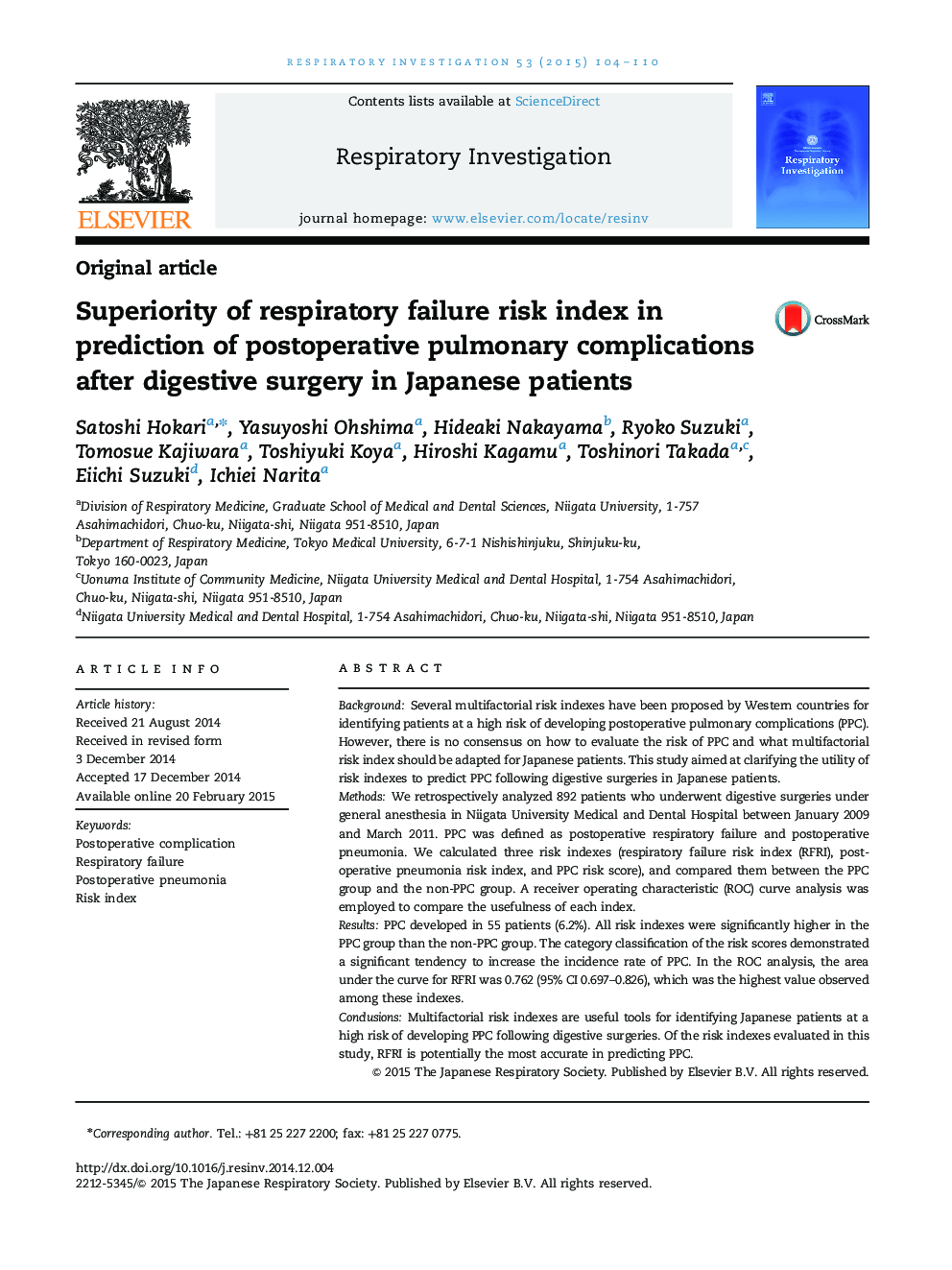| Article ID | Journal | Published Year | Pages | File Type |
|---|---|---|---|---|
| 3418595 | Respiratory Investigation | 2015 | 7 Pages |
BackgroundSeveral multifactorial risk indexes have been proposed by Western countries for identifying patients at a high risk of developing postoperative pulmonary complications (PPC). However, there is no consensus on how to evaluate the risk of PPC and what multifactorial risk index should be adapted for Japanese patients. This study aimed at clarifying the utility of risk indexes to predict PPC following digestive surgeries in Japanese patients.MethodsWe retrospectively analyzed 892 patients who underwent digestive surgeries under general anesthesia in Niigata University Medical and Dental Hospital between January 2009 and March 2011. PPC was defined as postoperative respiratory failure and postoperative pneumonia. We calculated three risk indexes (respiratory failure risk index (RFRI), postoperative pneumonia risk index, and PPC risk score), and compared them between the PPC group and the non-PPC group. A receiver operating characteristic (ROC) curve analysis was employed to compare the usefulness of each index.ResultsPPC developed in 55 patients (6.2%). All risk indexes were significantly higher in the PPC group than the non-PPC group. The category classification of the risk scores demonstrated a significant tendency to increase the incidence rate of PPC. In the ROC analysis, the area under the curve for RFRI was 0.762 (95% CI 0.697–0.826), which was the highest value observed among these indexes.ConclusionsMultifactorial risk indexes are useful tools for identifying Japanese patients at a high risk of developing PPC following digestive surgeries. Of the risk indexes evaluated in this study, RFRI is potentially the most accurate in predicting PPC.
